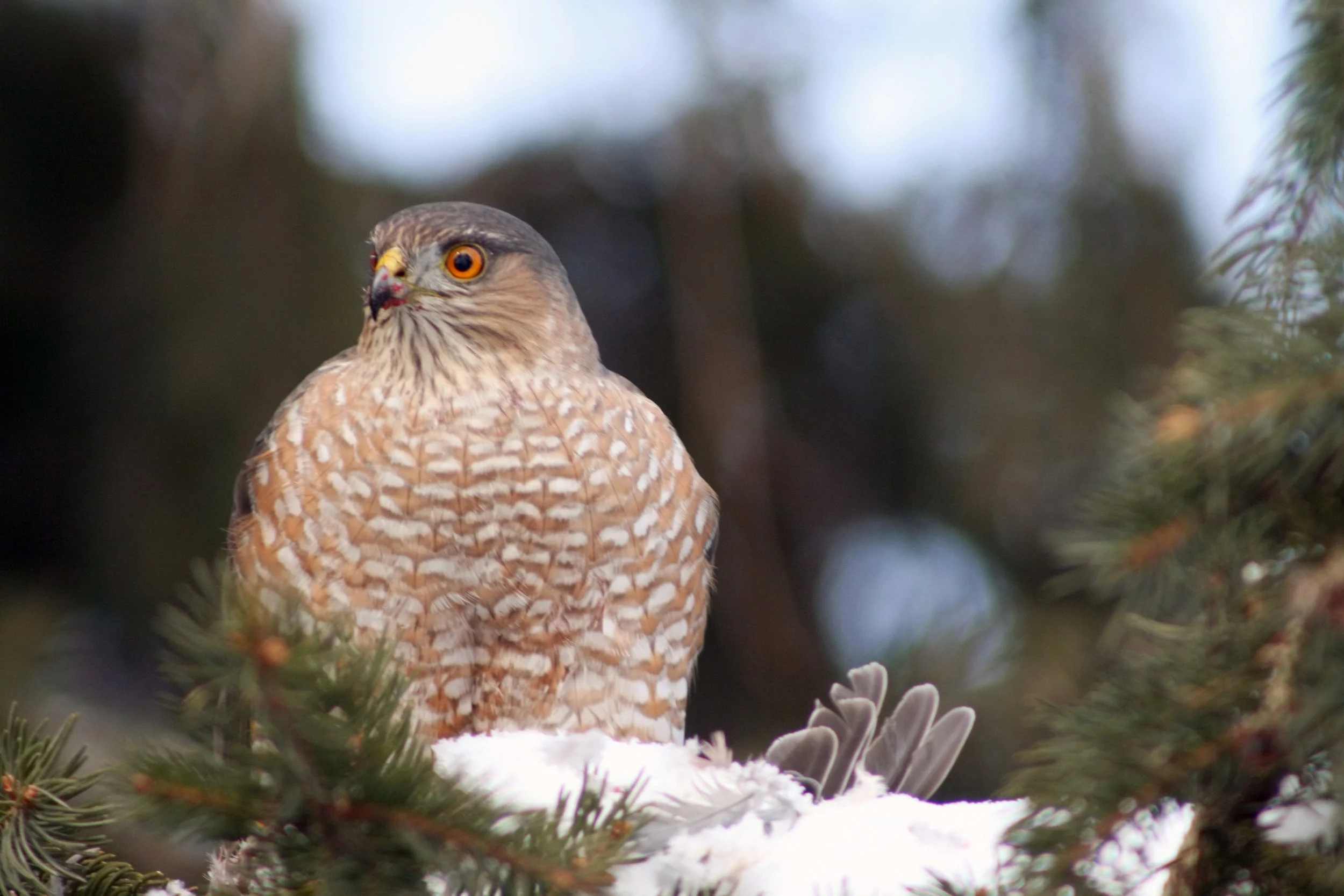
Outdoors
“Raptors, particularly the smaller hawk species, really hate great horned owls,” says biologist Luisa Frankenburg. With this in mind, Frankenburg had a strange task last fall—to place fake plastic owls at 9,000’ on the ridge of the Bridger mountains. Periodically, the biologist would traverse the ridge and prop a couple of owls up on poles, “so the raptors migrating through could see those big yellow eyes staring at them.” When birds would spot the decoy? “They like to go bombard the owl.” A bird swirling high above would dive toward the decoy and swoop back up, giving Frankenburg and her colleagues with the Bridger Migration Project a chance to detect niche features of migrating raptors like age and sex.
The Bridger Migration Project has a simple goal—monitor the fall flow of predatory birds as they come down from Canada and Alaska along the Rocky Mountain Flyway. According to Frankenburg, the Bridger Mountains of Southwest Montana are uniquely suited for this. Because the mountains are on a north-south axis, a strong westerly wind comes from the Gallatin Valley. When the wind hits the west slope of the Bridgers, it creates a choreographic lift; strong southerly winds that carry down the ridge result. The effective jet stream above the Bridgers attracts hawks, falcons, osprey, and most notably, golden eagles. During the seasonal peak, observers in the range regularly spot more than 200 golden eagles in a single day—the highest concentration of any observed site in the lower 48 states. “They’re huge and beautiful,” says Frankenburg. “They just come in so steady like a plane.”
Birding in the Bridgers: Tracking Raptors through the Rocky Mountain Flyway
By Eric Welch
“For so many people, myself included, it’s just dirt,” said Dr. Brian Smithers, Ph.D., an ecology professor at Montana State University who specializes in forest ecology, subalpine and alpine community ecology. “It’s the tapestry on which the things we really care about exist.” Smithers studied marine systems, specifically marine birds, as an undergraduate. Although he grew up in the alpine forests of California, not until graduate school and doctorate work did plants become part of the picture.
What I experienced on our backpacking trip, and what many people experience, is referred to as “plant blindness,” a phenomenon in which humans, sometimes intentionally, ignore plants. I like to think of it as the “background effect.” More often than not, unless you’re really paying attention, people focus on the moving aspects of the landscape, the charismatic megafauna of the West, rather than the base of all ecological systems.
When it comes to conservation and talking about extinction, we tend to focus on charismatic megafauna: wolves, bears, moose, large beings that move. Ask yourself this question: How many people come to Yellowstone National Park every year, season to season, to watch wildlife? Every pullout as you drive through the Lamar Valley is packed with cars, even in the early hours of the morning, people with binoculars looking for wolves. Now ask yourself this: How many people come to observe trees and flowers? All you hear are crickets.
Exploring Plant Blindness
By Christina Gibbs


